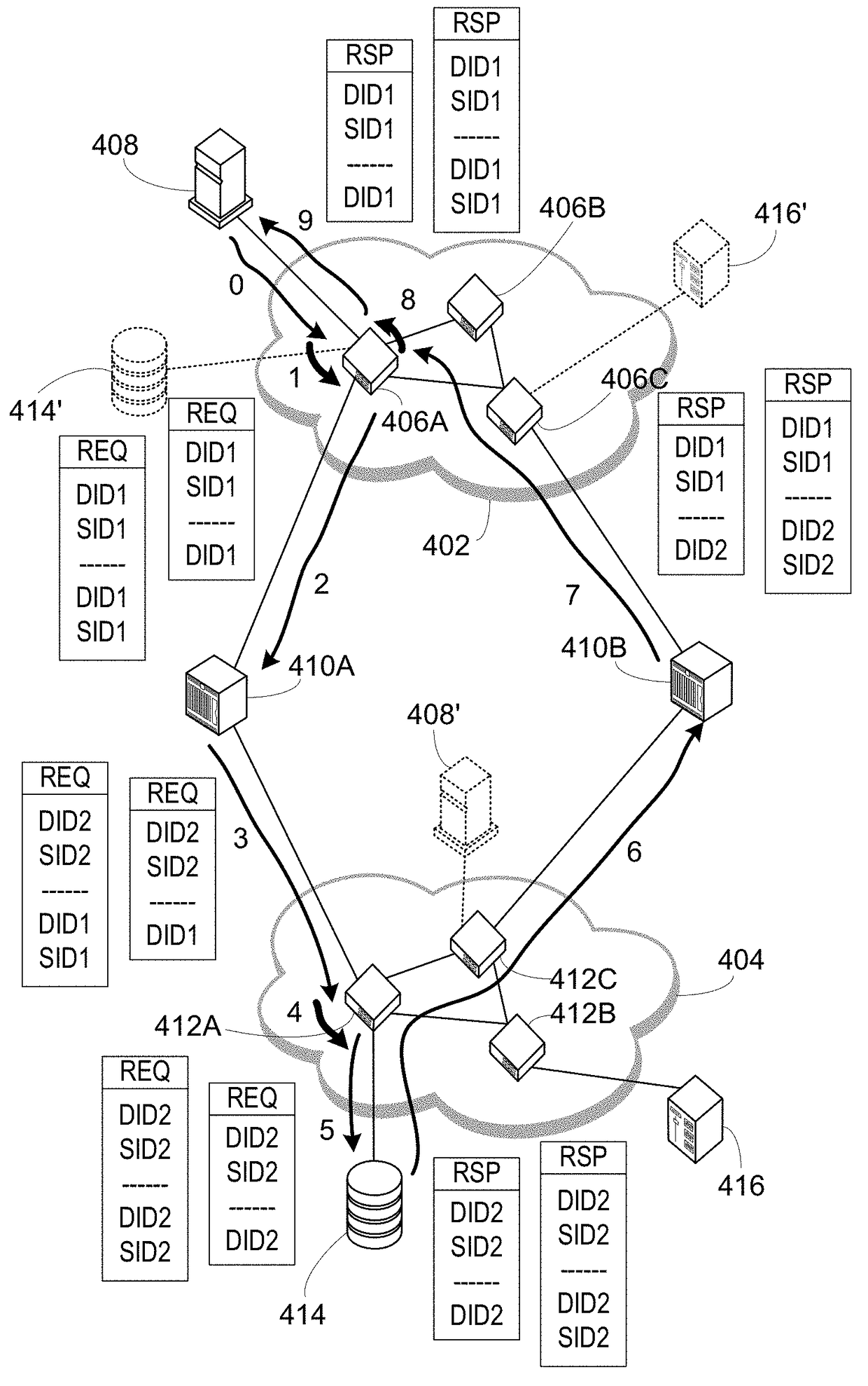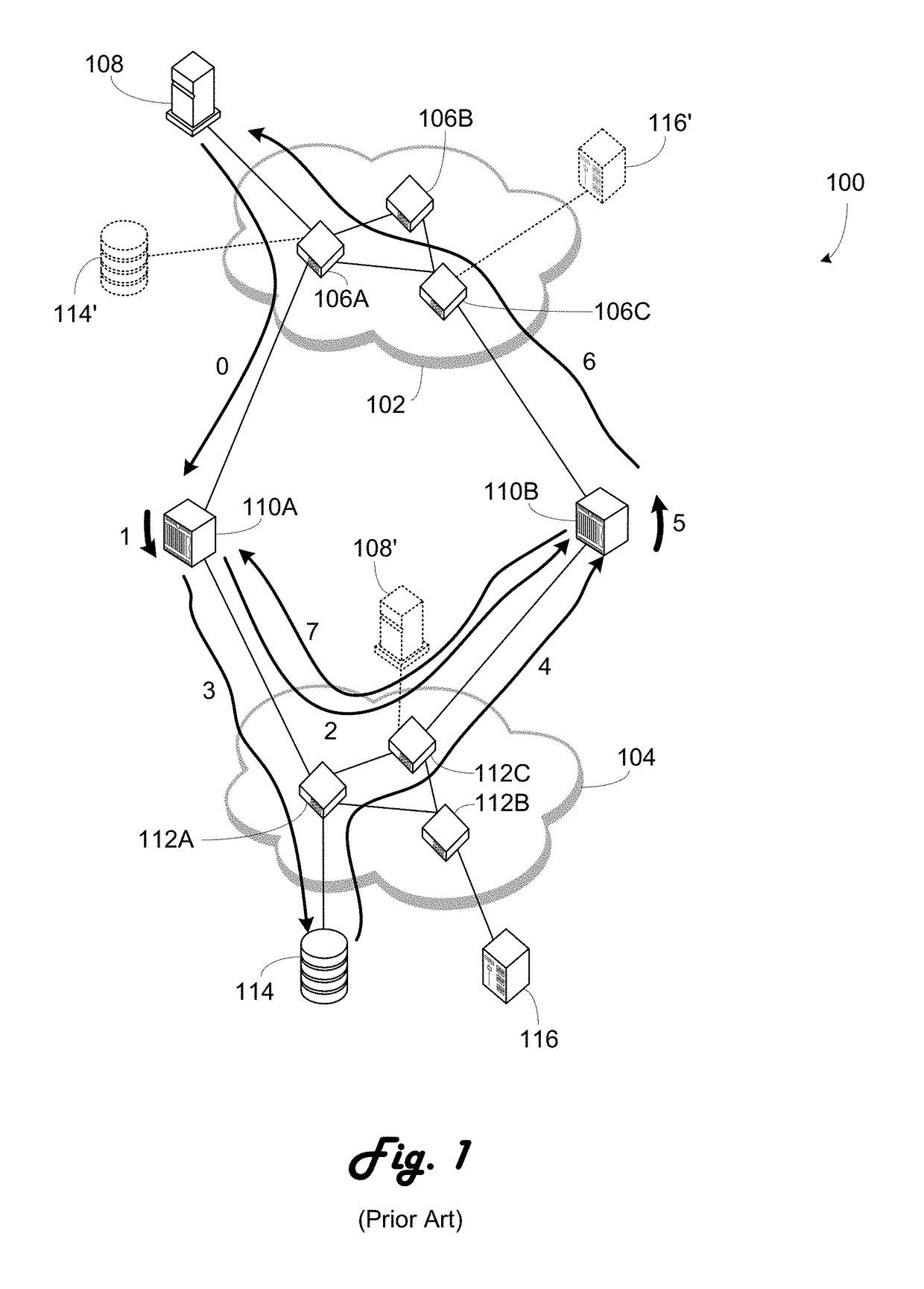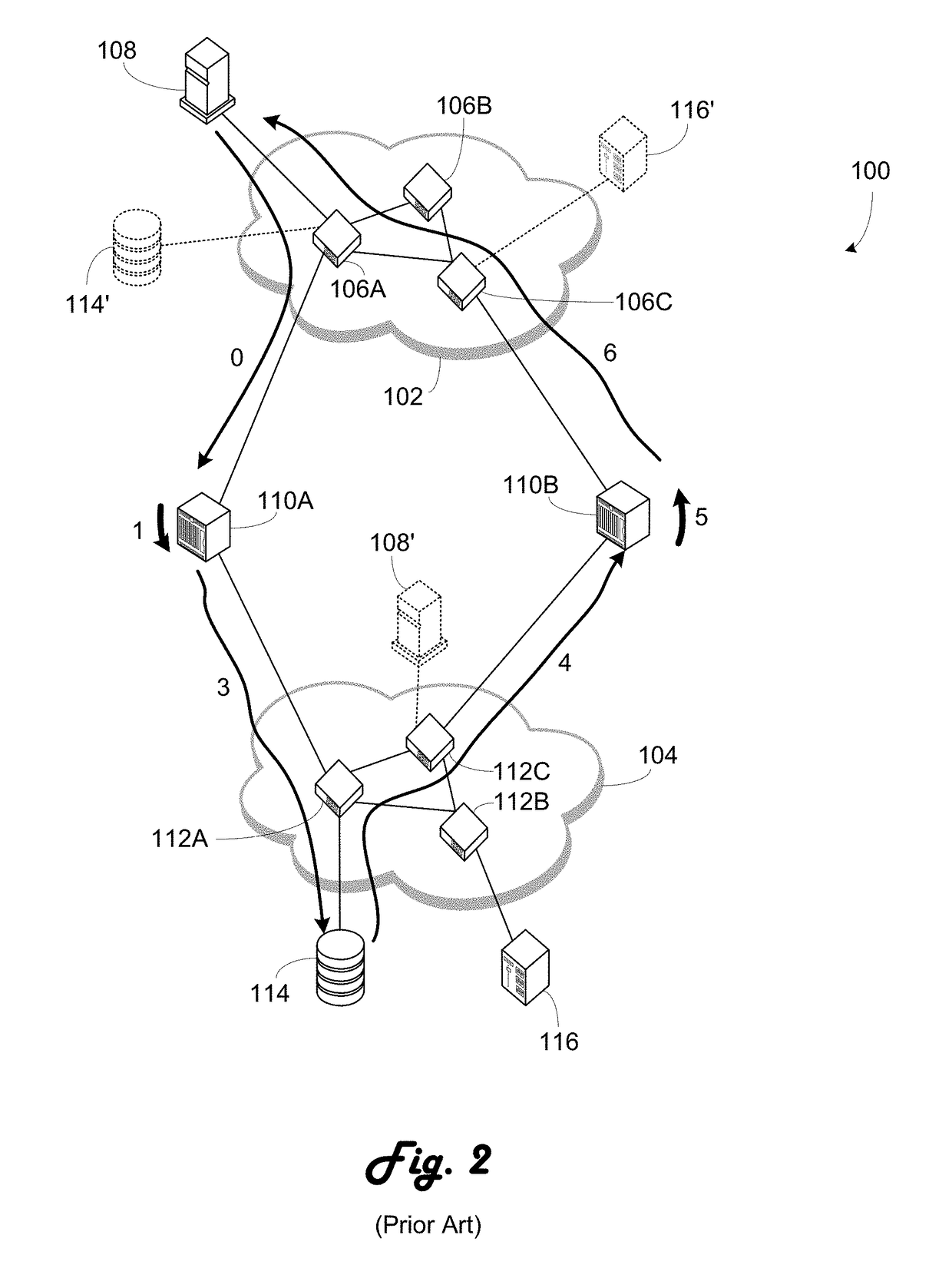Increased network scalability by router aware switches
a router-aware, network-scalability technology, applied in the field of storage area networks, can solve the problems of reducing the practical limit of the size of the fabric, affecting the scalability of the network, so as to reduce the processing burden, and reduce the impact of the ingress and egress switch
- Summary
- Abstract
- Description
- Claims
- Application Information
AI Technical Summary
Benefits of technology
Problems solved by technology
Method used
Image
Examples
Embodiment Construction
[0017]Referring now to FIG. 1, a network 100 illustrating flows according to the prior art is shown. Network 100 includes a first fabric 102 and a second fabric 104. The second first fabric 102 is formed by three switches 106A, 106B and 106C. A host or server node device 108 is connected to switch 106A. Fabric 104 is formed by three switches 112A, 112B and 112C. A disk storage unit 114 is connected to switch 112A while a tape storage unit 116 is connected to switch 112B. Switch 106A is also connected to a first router 110A. Router 110A is also connected to switch 112A. Switch 112C is connected to a second router 110B which is also connected to switch 106C.
[0018]By the operation of the routers 110A and 110B phantom devices appear in fabrics 102 and 104. Disk storage unit 114′ appears to be connected to phantom domain created by the router 110A, the phantom domain appearing as part of the first fabric 102. To simplify FIG. 2, the disk storage unit 1114′ is shown connected to switch 10...
PUM
 Login to View More
Login to View More Abstract
Description
Claims
Application Information
 Login to View More
Login to View More - R&D
- Intellectual Property
- Life Sciences
- Materials
- Tech Scout
- Unparalleled Data Quality
- Higher Quality Content
- 60% Fewer Hallucinations
Browse by: Latest US Patents, China's latest patents, Technical Efficacy Thesaurus, Application Domain, Technology Topic, Popular Technical Reports.
© 2025 PatSnap. All rights reserved.Legal|Privacy policy|Modern Slavery Act Transparency Statement|Sitemap|About US| Contact US: help@patsnap.com



